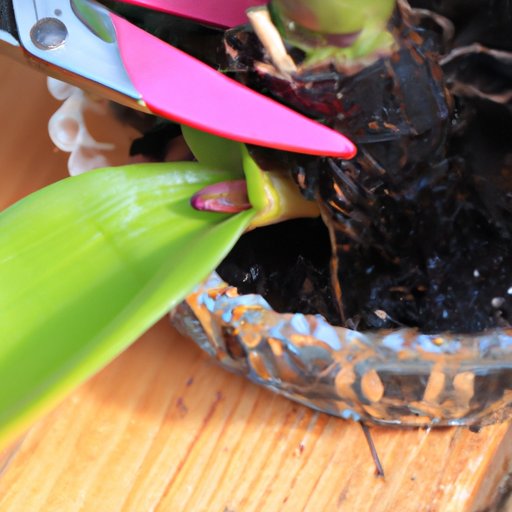
Introduction
Caring for orchids can be daunting, especially for beginners. Common problems include inadequate lighting, incorrect watering, and pest infestations. However, with the right knowledge and techniques, anyone can successfully care for their orchids indoors. This article aims to provide a comprehensive guide on how to care for orchids indoors, covering everything from lighting and temperature to fertilizing and propagation.
Start with the Basics of Orchid Care
Orchids require specific lighting conditions to thrive. Too much or too little light can be damaging to your plant. You can provide the right lighting by placing your orchid near a north or east-facing window or by using artificial grow lights. In terms of temperature and humidity, most orchids prefer a temperature between 60-75°F and humidity levels between 40-60%. Proper ventilation can help regulate these conditions.
Watering Your Orchids
When it comes to watering, orchids can be quite sensitive. Overwatering can cause root rot, while underwatering can lead to dehydration and stunted growth. Ideally, you should water your orchids once a week and allow the soil to dry out between waterings. Additionally, you can use a variety of watering techniques, such as bottom watering or misting, to keep your orchids hydrated.
Fertilizing Your Orchids
Fertilizer is vital to the growth and development of orchids. Most orchids require a balanced fertilizer with specific ingredients and proportions. You should administer fertilizer on a routine schedule every 2-3 weeks during the growing season and every 6-8 weeks during the dormant season. Over-fertilizing can be harmful to your orchids and result in salt buildup in the soil.
Potting and Repotting
The right container and potting material can make all the difference when it comes to orchid care. Choose pots and materials that provide drainage and aeration to your orchids. Repotting should be done every 1-2 years as your orchids outgrow their containers. Be careful not to overpot your orchids or damage their fragile roots in the process.
Diseases and Pests
Like any plant, orchids are susceptible to various pests and diseases. Common orchid pests include mealybugs, spider mites, and scale insects, while common orchid diseases include root rot and fungal infections. You can prevent and treat these problems by practicing good sanitation practices, using organic insecticides, and monitoring your plants for any signs of infestation or infection.
Propagation
Propagation is the process of creating new plants from existing ones. Orchids can be propagated using keikis, which are small plantlets that form at the base of the parent plant. Alternatively, you can divide and transplant your orchids once they outgrow their containers. Both methods require patience and attention to detail to ensure successful propagation.
Orchids for Beginners
Beginners to orchid care should start with forgiving orchids that require minimal care and attention. These include Phalaenopsis, Paphiopedilums, and Dendrobiums. It’s also important to establish a routine schedule for watering, fertilizing, and monitoring your orchids to ensure they thrive in their environment.
Conclusion
By following the right techniques and guidelines, anyone can care for orchids indoors. Orchids require specific conditions, including lighting, temperature, and humidity, as well as regular watering, fertilizing, and potting. Additionally, it’s crucial to prevent and treat pests and diseases to keep your plants healthy. By routinely monitoring your plants and following this comprehensive guide, you can successfully care for your orchids and enjoy their beautiful blooms for years to come.




